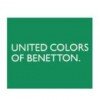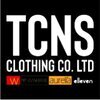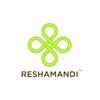Filter interviews by
Shingora Textiles Interview Questions and Answers
Shingora Textiles Interview Experiences
2 interviews found
I applied via Referral and was interviewed before Sep 2022. There were 2 interview rounds.

(3 Questions)
- Q1. What is nonwoven fabric.
- Ans.
Nonwoven fabric is a type of fabric made from fibers that are bonded together through various processes, rather than being woven together.
Made from fibers that are bonded together
Different processes used for bonding, such as chemical, mechanical, or thermal
Commonly used in disposable products like face masks, wipes, and surgical gowns
- Q2. What is the unit of measurements for nonwoven fabric.
- Ans.
The unit of measurement for nonwoven fabric is grams per square meter (gsm).
The unit of measurement for nonwoven fabric is typically grams per square meter (gsm)
GSM is used to measure the weight or density of nonwoven fabrics
Higher GSM indicates a heavier or denser fabric, while lower GSM indicates a lighter fabric
For example, a nonwoven fabric with a GSM of 80 would be lighter than a fabric with a GSM of 150
- Q3. Types of nonwoven fabric and its classification
- Ans.
Nonwoven fabrics are made by bonding or interlocking fibers together without weaving or knitting.
Nonwoven fabrics can be classified based on the method of production (spunbond, meltblown, needlepunch, etc.)
They can also be classified based on the type of fibers used (polyester, polypropylene, viscose, etc.)
Nonwoven fabrics are commonly used in industries such as healthcare, automotive, construction, and filtration.
Exam...
Operations Manager Interview Questions asked at other Companies
Interview Questionnaire
2 Questions
- Q1. What is fiber
- Ans.
Fiber is a flexible, thread-like material made from natural or synthetic sources, used in the production of textiles.
Fiber is the basic building block of textiles.
It can be derived from plants, animals, or made synthetically.
Examples of natural fibers include cotton, wool, and silk.
Synthetic fibers include polyester, nylon, and acrylic.
Fibers can be spun into yarn and then woven or knitted to create fabrics.
- Q2. What is count
- Ans.
Count refers to the number of yarns per unit length in a textile fabric.
Count is a measure of the fineness or coarseness of a fabric.
It is usually expressed as the number of yarns per unit length, such as threads per inch or threads per centimeter.
Higher count indicates a finer fabric, while lower count indicates a coarser fabric.
Count can vary depending on the type of yarn used and the desired characteristics of the f...
Skills evaluated in this interview
Textile Engineer Interview Questions asked at other Companies
Interview questions from similar companies

I applied via Walk-in and was interviewed before Nov 2023. There was 1 interview round.
Math, reasoning, English grammar & psychometric test taken.
Interview Preparation Tips

I applied via Referral and was interviewed in Sep 2022. There were 2 interview rounds.

(2 Questions)
- Q1. Current location of company
- Ans.
The current location of the company is not available.
- Q2. Current sales value of present company
- Ans.
The current sales value of the present company is confidential.
I am not at liberty to disclose the exact sales value of the company.
However, I can assure you that the company has been performing well in terms of sales.
We have been consistently meeting our targets and achieving growth in our sales figures.
Our sales team has been working hard to maintain and expand our customer base.
We are confident in our ability to con...
Interview Preparation Tips

I applied via Naukri.com and was interviewed before Dec 2023. There was 1 interview round.
(2 Questions)
- Q1. How many years of experience?
- Ans.
I have 8 years of experience in sales, with a proven track record of exceeding targets and building strong client relationships.
8 years of experience in sales
Consistently exceeded sales targets
Built strong client relationships
Implemented successful sales strategies
Trained and mentored junior sales team members
- Q2. Why we appoint you?
- Ans.
I have a proven track record of exceeding sales targets and building strong relationships with clients.
I have X years of experience in sales, consistently meeting and exceeding targets.
I have a strong understanding of the industry and market trends.
I have excellent communication and negotiation skills, which have helped me build strong relationships with clients.
I am a strategic thinker and problem solver, able to iden...
Interview Preparation Tips

Assistant Manager Interview Questions & Answers
United Colors of Benettonposted on 9 May 2024
(1 Question)
- Q1. How to work kpi
- Ans.
KPIs are key performance indicators used to measure the success of a business or individual in achieving their goals.
Set clear and specific KPIs that align with overall goals and objectives
Regularly track and monitor progress towards KPIs
Use data and analytics to measure performance and make informed decisions
Adjust KPIs as needed to reflect changing priorities or circumstances

I applied via Referral and was interviewed before Jun 2021. There were 2 interview rounds.

(1 Question)
- Q1. Why do you want to join. What are your future plans
Interview Preparation Tips

I applied via Company Website and was interviewed in Mar 2021. There was 1 interview round.
Interview Questionnaire
2 Questions
- Q1. The question was up saling in tha stor in the gud nbars in my prsal skil
- Ans.
the saling was good nbar in tha stor
Gud customar sarviss and parchess tha adisnal
Artical to up saling
- Q2. Store back office stok in out and rtv detel tu vendar
Interview Preparation Tips
I am gud experience in ethanic brand in w women indian wear

I applied via Naukri.com and was interviewed in Dec 2019. There were 6 interview rounds.
Interview Questionnaire
3 Questions
- Q1. How to perform in shop floor?
- Ans.
Performing on the shop floor involves effectively managing operations, ensuring productivity, and maintaining a safe and organized work environment.
Understand the production process and workflow
Monitor and manage production targets and deadlines
Ensure proper utilization of resources and equipment
Maintain a clean and organized work area
Implement and enforce safety protocols
Communicate effectively with team members and s...
- Q2. How to maintain in shop floor 5s,Safety.
- Ans.
Maintaining 5S and safety on the shop floor requires regular monitoring, training, and communication.
Regularly inspect the shop floor to ensure 5S and safety standards are being met
Provide ongoing training to employees on 5S and safety procedures
Encourage open communication between employees and management regarding safety concerns
Implement a system for reporting and addressing safety hazards
Recognize and reward employ...
- Q3. What's meaning of 5s ,describe it.
- Ans.
5S is a workplace organization method that aims to improve efficiency and productivity by maintaining an orderly and clean work environment.
Sort - separate necessary items from unnecessary ones
Set in order - arrange necessary items in a logical and efficient manner
Shine - clean and inspect the work area regularly
Standardize - establish procedures and guidelines for maintaining the 5S system
Sustain - ensure that the 5S ...
Interview Preparation Tips
Interview Questionnaire
1 Question
- Q1. What is online executive
- Ans.
An online executive is a professional who manages and oversees various aspects of online operations and strategies for a company or organization.
An online executive is responsible for developing and implementing online marketing campaigns.
They oversee the company's website and ensure it is user-friendly and optimized for search engines.
They analyze online data and metrics to measure the effectiveness of online strategi...
Shingora Textiles Interview FAQs
Tell us how to improve this page.
Interview Questions for Popular Designations
Shingora Textiles Interview Process
based on 1 interview
Interview experience
Interview Questions from Similar Companies
Shingora Textiles Reviews and Ratings
based on 62 reviews
Rating in categories
|
Textile Designer
11
salaries
| ₹2.2 L/yr - ₹10 L/yr |
|
Senior Merchandiser
6
salaries
| ₹5.1 L/yr - ₹6 L/yr |
|
Assistant Manager
5
salaries
| ₹4.1 L/yr - ₹6 L/yr |
|
HR Manager
5
salaries
| ₹3.9 L/yr - ₹12.5 L/yr |
|
Assistant Merchandiser
5
salaries
| ₹2.1 L/yr - ₹3.5 L/yr |

TCNS Clothing Company

United Colors of Benetton

Reshamandi

Safari Industries India
- Home >
- Interviews >
- Shingora Textiles Interview Questions













